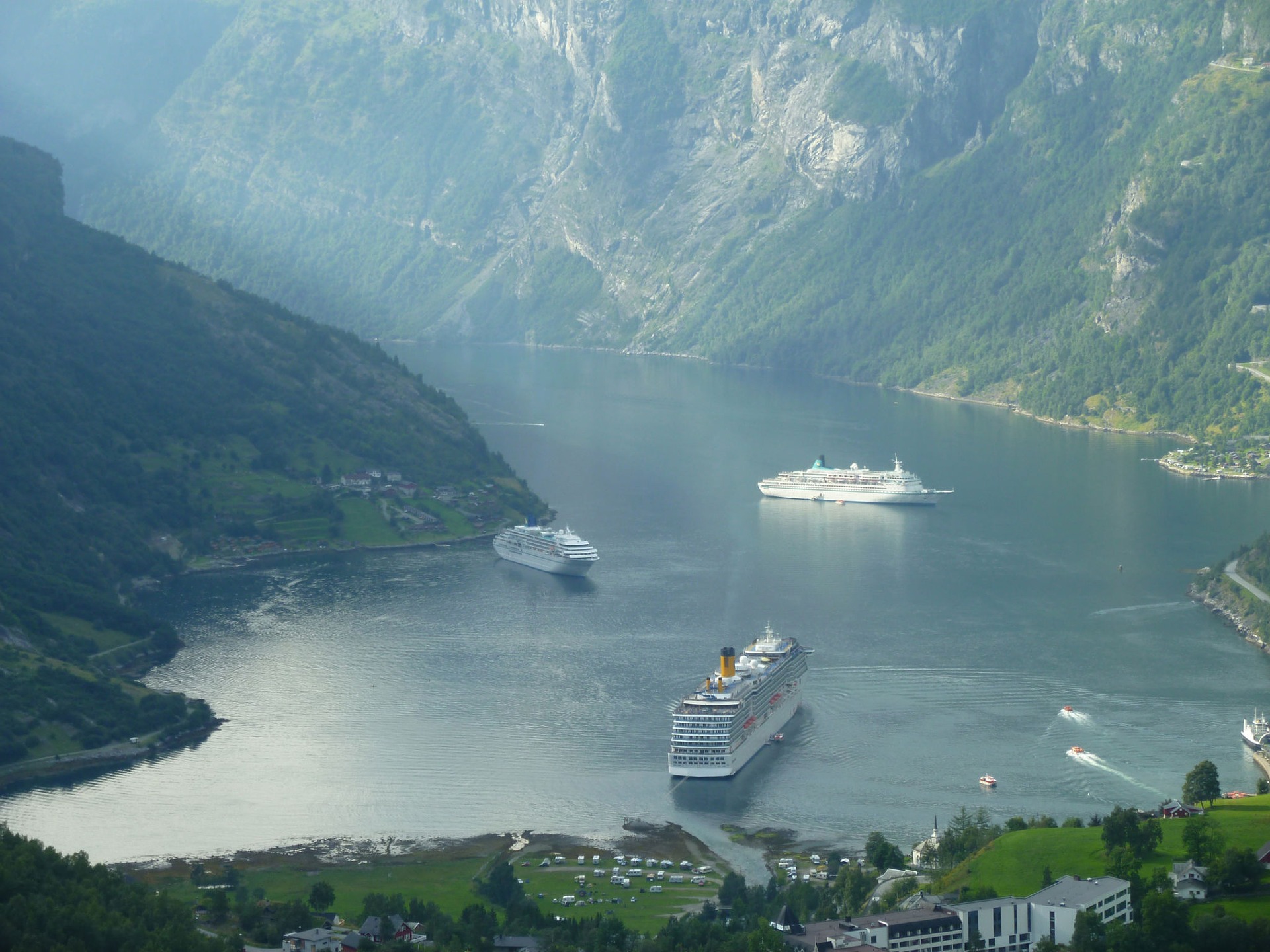Norway could have up to 60 pure electric ferries within three years, and the start of a new age of hydrogen powered ferries. Meanwhile a new law wil ban cruise ships form entering the countries protected fjords,.
Public policy in Norway has driven the development of cleaner ferries, first with the introduction of vessels that can be powered by liquid natural gas, and more recently with hybrid and pure electric ferries. State influence has led to regional councils to stipulate that ferry operators will only win concessions if they meet tough emissions criteria.
In 1995 the country’s clean air policies saw the development of LNG powered ships. There are now 21 LNG-powered or dual-fuelled ferries in the country, and the concept has now spread around the world and into many different ship types. Other fuels have also emerged such as ethanol and methanol. The first all electric ferry in Norway, Ampere, was launched in 2015, and a number of others have since followed, notably the Future of the Fjords, a all electric tourist boat in one of the country’s protected fjords.
Part of the drive is also the ability to support through such contracts a number of Norwegian technology clusters that have and are developing clean tech solutions. One of the main bodies co-ordinating these clusters is the NCE Maritime Cleantech
Speaking at the Opening Oceans Conference in Copenhagen last week NCE Maritime Cleantech chief executive Hege Økland said the recent development sin battery power technology has been instrumental in this technology change and put an emphasis on the power of public purchasing decisions.
The future will however see a move to hydrogen, she said, with public contracts in place to have a hydrogen powered ferry by 2021.
“This is a huge opportunity for pur yards, our suppliers as battery packages are installed for peak shaving and plug in solutions,” she said, adding that a Norwegian rule will soon be in place banning all emissions from the country’s UNESCO heritage sites from 2026.
While this will lead to all the local and regional ferries that criss-cross these fjords annually being replaced by electric or hydrogen powered alternatives, it will be bad news for the growing cruise ship industry which often sends larger vessels into the area.
Fathom.World































